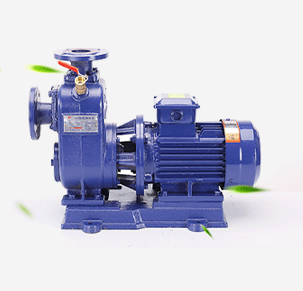Thai
- Afrikaans
- Albanian
- Amharic
- Arabic
- Armenian
- Azerbaijani
- Basque
- Belarusian
- Bengali
- Bosnian
- Bulgarian
- Catalan
- Cebuano
- Corsican
- Croatian
- Czech
- Danish
- Dutch
- English
- Esperanto
- Estonian
- Finnish
- French
- Frisian
- Galician
- Georgian
- German
- Greek
- Gujarati
- Haitian Creole
- hausa
- hawaiian
- Hebrew
- Hindi
- Miao
- Hungarian
- Icelandic
- igbo
- Indonesian
- irish
- Italian
- Japanese
- Javanese
- Kannada
- kazakh
- Khmer
- Rwandese
- Korean
- Kurdish
- Kyrgyz
- Lao
- Latin
- Latvian
- Lithuanian
- Luxembourgish
- Macedonian
- Malgashi
- Malay
- Malayalam
- Maltese
- Maori
- Marathi
- Mongolian
- Myanmar
- Nepali
- Norwegian
- Norwegian
- Occitan
- Pashto
- Persian
- Polish
- Portuguese
- Punjabi
- Romanian
- Russian
- Samoan
- Scottish Gaelic
- Serbian
- Sesotho
- Shona
- Sindhi
- Sinhala
- Slovak
- Slovenian
- Somali
- Spanish
- Sundanese
- Swahili
- Swedish
- Tagalog
- Tajik
- Tamil
- Tatar
- Telugu
- Thai
- Turkish
- Turkmen
- Ukrainian
- Urdu
- Uighur
- Uzbek
- Vietnamese
- Welsh
- Bantu
- Yiddish
- Yoruba
- Zulu
Telephone: +86 13120555503
Email: frank@cypump.com
ธ.ค. . 28, 2024 23:55 Back to list
ejector pumps for basement bathrooms
Understanding Ejector Pumps for Basement Bathrooms
When it comes to home plumbing, especially in homes with basement bathrooms, one crucial component often overlooked is the ejector pump. Basement bathrooms can present unique challenges when it comes to waste management and plumbing systems, primarily due to their location below the main sewer line. An ejector pump serves as a solution to these challenges, ensuring that wastewater can be efficiently removed and transported to the nearest sewer line.
What is an Ejector Pump?
An ejector pump, also known as a sewage ejector pump, is a type of pump used to lift wastewater from lower to higher elevation. It is specifically designed for handling sewage and is capable of dealing with solid waste. Ejector pumps are typically installed in basements where gravity drainage is not feasible, such as in the case of bathrooms located below the main sewer line.
How Does an Ejector Pump Work?
The operation of an ejector pump is based on a simple yet effective mechanism. When wastewater from the bathroom (including urine, feces, and other waste) flows into the ejector pit or basin, the pump activates once the water rises to a pre-set level. The pump then uses a powerful motor to propel the wastewater upward through the discharge pipe, which leads to the main sewer line or a septic system.
The ejector pump features an impeller that generates enough force to push the waste uphill, effectively overcoming the gravitational pull that would otherwise keep it stagnant. This process is crucial for preventing potential backups, odors, and health hazards associated with sewage accumulation.
Importance of Ejector Pumps in Basement Bathrooms
1. Preventing Backflow One of the main reasons for installing an ejector pump is the prevention of sewage backflow, which can lead to major plumbing disasters. A well-functioning ejector pump minimizes this risk effectively.
2. Space Utilization Ejector pumps allow homeowners to utilize basement spaces for bathrooms and other facilities without the constraints of gravity drainage systems. This opens up more possibilities in home design.
3. Health and Safety Properly functioning ejector pumps minimize odors and health risks associated with sewage. They contribute to maintaining a clean and safe environment.
ejector pumps for basement bathrooms

4. Increased Home Value Having additional bathrooms can significantly increase a home’s value. Ejector pumps enable the creation of functional bathrooms in basements, adding to the overall appeal and utility of the property.
Choosing the Right Ejector Pump
When selecting an ejector pump for a basement bathroom, several factors should be considered
1. Pump Capacity Ensure that the pump can handle the volume of wastewater produced. Look for products that specify the horsepower and gallon-per-minute rating.
2. Quality and Reliability It's essential to invest in a high-quality ejector pump from a reputable manufacturer. Cheaper, low-quality models may lead to frequent breakdowns and costly repairs.
3. Noise Level Some ejector pumps can be quite noisy during operation. Assess whether noise is a concern, especially if the basement is a frequently used area.
4. Installation and Maintenance Consider the complexity of installation and ongoing maintenance requirements. Some pumps may require professional installation, while others are easier for a DIY approach.
5. Backup Options In regions prone to power outages, consider installing a backup power source for the ejector pump to avoid sewage collection in the event of electrical failures.
Conclusion
Ejector pumps play a vital role in the functionality of basement bathrooms, providing a reliable solution to wastewater management. Understanding their operation, importance, and selection criteria can ensure that homeowners make informed decisions when integrating these systems into their homes. For anyone contemplating the addition of a basement bathroom, investing in a high-quality ejector pump is an essential step towards achieving a functional, safe, and efficient plumbing system.
-
Horizontal Split Case Pump with GPT-4 Turbo | High Efficiency
NewsAug.01,2025
-
ISG Series Pipeline Pump - Chi Yuan Pumps | High Efficiency, Durable Design
NewsAug.01,2025
-
Advanced Flue Gas Desulfurization Pump with GPT-4 Turbo | Durable & Efficient
NewsJul.31,2025
-
ISG Series Vertical Pipeline Pump - Chi Yuan Pumps | Advanced Hydraulic Design&Durable Construction
NewsJul.31,2025
-
ISG Series Vertical Pipeline Pump - Chi Yuan Pumps | Energy Efficient & Low Noise
NewsJul.31,2025
-
pipeline pump - Chi Yuan Pumps Co., LTD.|High Efficiency&Low Noise
NewsJul.31,2025










